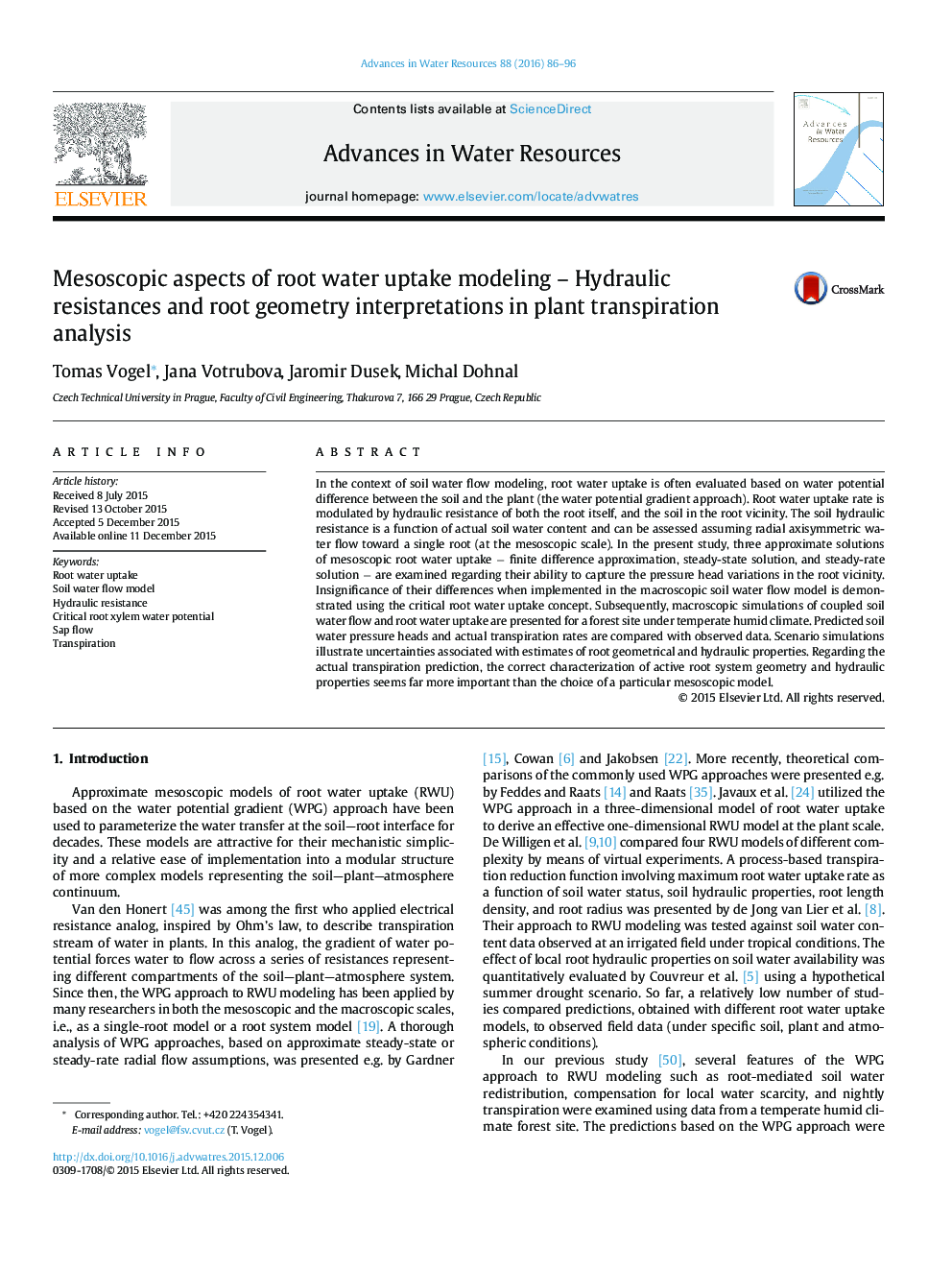| کد مقاله | کد نشریه | سال انتشار | مقاله انگلیسی | نسخه تمام متن |
|---|---|---|---|---|
| 4525325 | 1625622 | 2016 | 11 صفحه PDF | دانلود رایگان |

• Root water uptake modeled at meso- (single-root) and macro- (root-system) scales.
• Results of RWU modeling confronted with sap flow and tensiometric data.
• Similar critical RWU rates found when different mesoscopic RWU models applied.
• Transpiration rates found highly sensitive to root geometry/resistance characterization.
• Equifinality problem detected for active root system parameterization.
In the context of soil water flow modeling, root water uptake is often evaluated based on water potential difference between the soil and the plant (the water potential gradient approach). Root water uptake rate is modulated by hydraulic resistance of both the root itself, and the soil in the root vicinity. The soil hydraulic resistance is a function of actual soil water content and can be assessed assuming radial axisymmetric water flow toward a single root (at the mesoscopic scale). In the present study, three approximate solutions of mesoscopic root water uptake − finite difference approximation, steady-state solution, and steady-rate solution − are examined regarding their ability to capture the pressure head variations in the root vicinity. Insignificance of their differences when implemented in the macroscopic soil water flow model is demonstrated using the critical root water uptake concept. Subsequently, macroscopic simulations of coupled soil water flow and root water uptake are presented for a forest site under temperate humid climate. Predicted soil water pressure heads and actual transpiration rates are compared with observed data. Scenario simulations illustrate uncertainties associated with estimates of root geometrical and hydraulic properties. Regarding the actual transpiration prediction, the correct characterization of active root system geometry and hydraulic properties seems far more important than the choice of a particular mesoscopic model.
Journal: Advances in Water Resources - Volume 88, February 2016, Pages 86–96